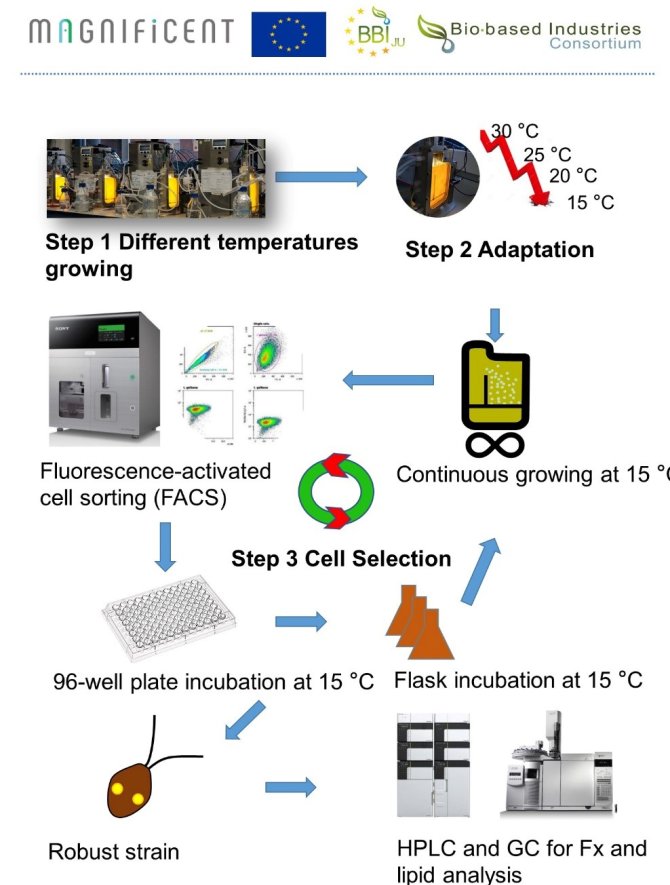
Projekt
Producing fucoxanthin and DHA from Tisochrysis lutea during winter
We are going to design a strategy to get Tisochrysis lutea cells that can grow fast at low temperatures and study the metabolic changes during strain improvement.
Background
Tisochrysis Lutea (previously reported as Isochrysis galbana T-ISO) has been widely used in aquaculture as a source of fucoxanthin (Fx) and long-chain omega-3 polyunsaturated fatty acid (namely, DHA). The optimal temperature for Tisochrysis Lutea production is from 25 to 30°C, which causes difficulties for production at low temperatures (<20°C). This project will supply a strategy on how to improve the growth and productivity at 15°C for Fx and DHA production in Tisochrysis Lutea, providing industrial partners with new robust cell lines.
Aim
- To understand Fx and lipid changes in Tisochrysis lutea at low temperatures
- To develop a strategy for microalgal strain improvement
- To get a Tisochrysis lutea strain that can grow fast at 15°C
Approach
- Tisochrysis lutea growing at different temperatures in photobioreactors
- Cold temperature adaptation: change temperature from 30°C to 15°C gradually
- FACS analysis and cell sorting
Improved cells will be obtained from sequential rounds of FACS selection and will be characterized at genomic and transcriptomic levels.
Thesis projects
Within this project there are various possibilities for doing a BSc or MSc thesis. If you are interested in doing a BSc or MSc thesis, feel free to contact me.
